The celebrated Mr. K gives you the Distinguished Competition’s answer to the Marvel Bullpen Bulletin…
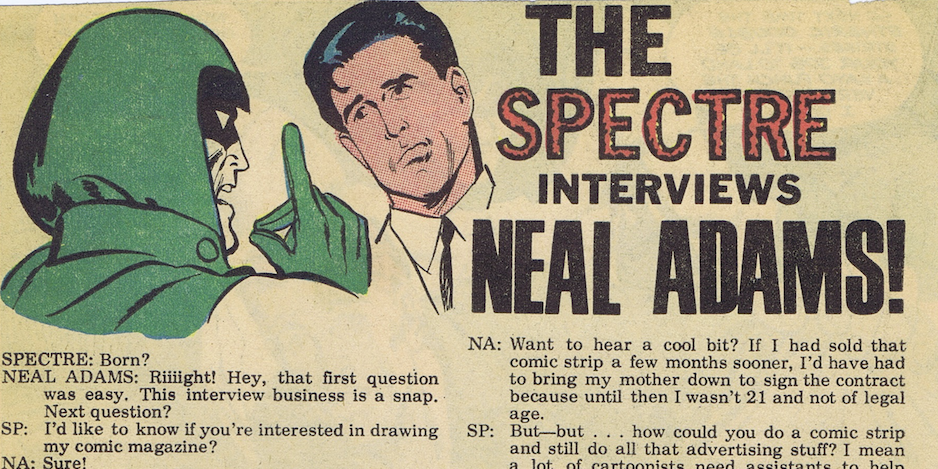
—
UPDATED 3/1/24: Diggin’ in the vault time — when we go deep into the recesses of the shadowy subterranean 13th Dimension headquarters for great columns that deserve another look. Just for kicks! This one first ran in March 2021. Right on! — Dan
—
Our buddy and pal Paul Kupperberg has another groovy column here for you — a zippy exploration of DC’s often cool (and often not) answers to Stan Lee’s raucous salesmanship over at rival Marvel in the 1960s.
You’ll dig it — but don’t forget that Mr. K has a variety of books out there to entertain and enlighten you, as well, such as The Unpublished Comic Book Scripts of Paul Kupperberg. You can click here to check it out. (And there’s a second volume in the works!)
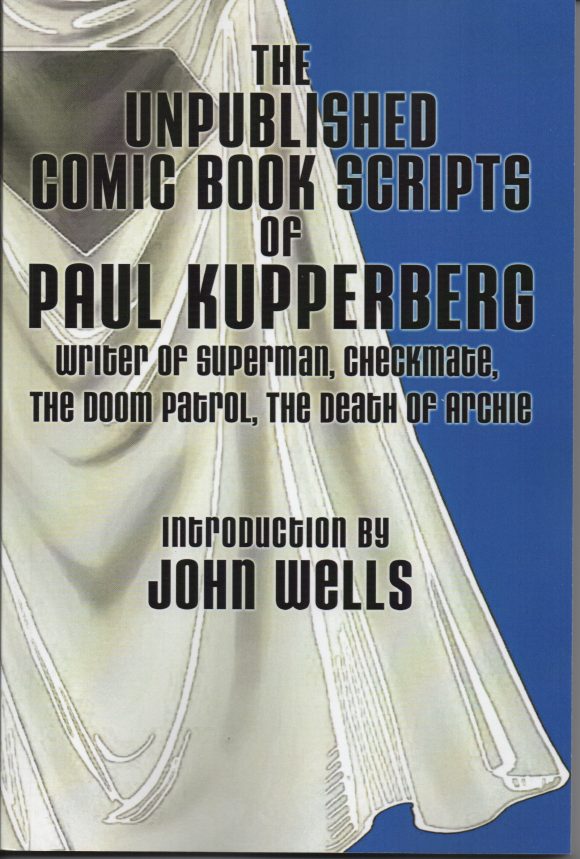
Right on.
—
By PAUL KUPPERBERG
It took DC Comics a few years to even start to try to close the “Fan Gap” between itself and rival Marvel Comics. For a long time, the short-sleeve-white-shirt-and-tie powers that be at DC dismissed the comics being produced by Stan Lee/Jack Kirby/Steve Ditko et al as crude and beneath their notice.
In the December 1965 Marvel titles, Stan introduced the Bullpen Bulletin page; two years later, “Stan’s Soapbox” was added, allowing the Man to talk directly to the readers. I can envision the chuckling around the DC editorial conference table – “Imagine wasting a page that could have been sold for advertising on overblown hype aimed at 10-year-olds!”
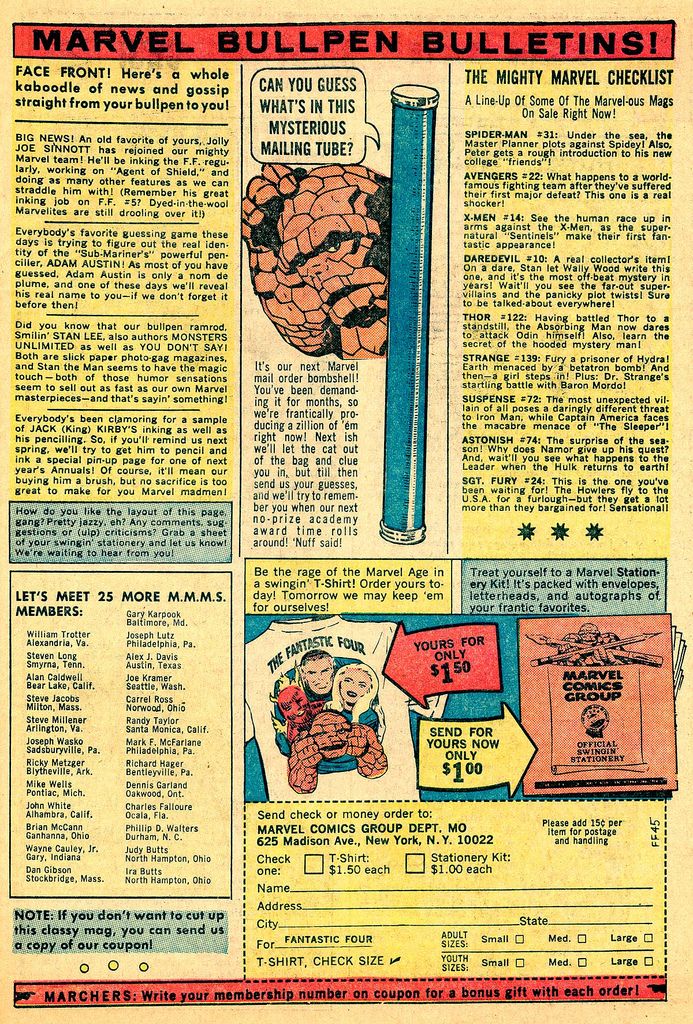
A year or so later, the conference table turned when DC saw that Marvel — now liberated from the restrictions placed on the number of books they could publish under their old distribution deal with DC sister company Independent News — might have been on to something after all. Of course, DC wasn’t being helmed by what you would call any dynamic personalities with an appeal like Stan’s to be the public face of the company. Besides, overblown hype wasn’t the DC house style. DC were Dignified Comics.
Still, an effort to reach out to the fans was made. A couple of the individual editors already got it; Murray Boltinoff produced chatty lettercols, and the letter pages in Julie Schwartz’s early 1960s titles were buzzing with fan activity as letter writers plugged their ’zines and activities and Julie ran their addresses so they could connect all across the country. Even there, though, readers addressed the third person voice of the letters page as “Dear Editor” and he signed his replies in kind.
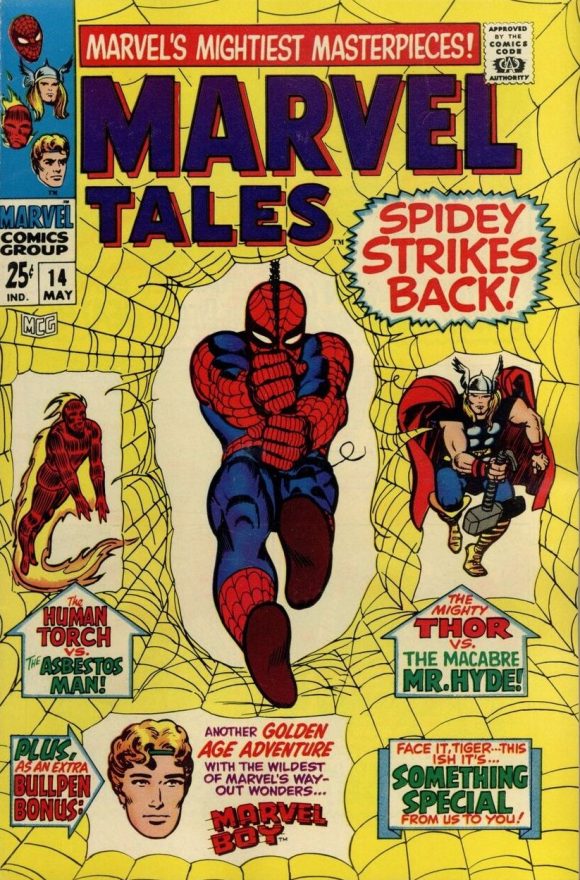
Keep in mind, in 1968, only seven years after Fantastic Four #1, Marvel (in its latest incarnation) was still a relatively young company and its readers/fans had the advantage of either having been in on the ride since very early on, or being able to catch up on the short history via 64-page reprint titles like Marvel Collectors’ Item Classics and Marvel Tales. DC, on the other hand, had 30 years of history since Action Comics #1, its back story spread over an accumulated hundreds, if not thousands, of vintage comics, an almost infinitesimal piece of it ever reprinted.
So while Marvel’s fan outreach looked ahead, Stan trumpeting what was coming up next or teasing about projects in the works, DC seemed largely focused on the past, introducing readers to that rich 30-year history, a lot of which was being revived by the Schwartz office (y’know, Earth-One/Earth-Two stuff; see my 13 FAVORITE 1960s DC MULTIVERSE STORIES). Thus, a wide range of topics, from fanzines to creator profiles, were covered in pages called “Fact Files,” “The Greatest Hero of Them All,” and “The Wonderful World of Comics.”
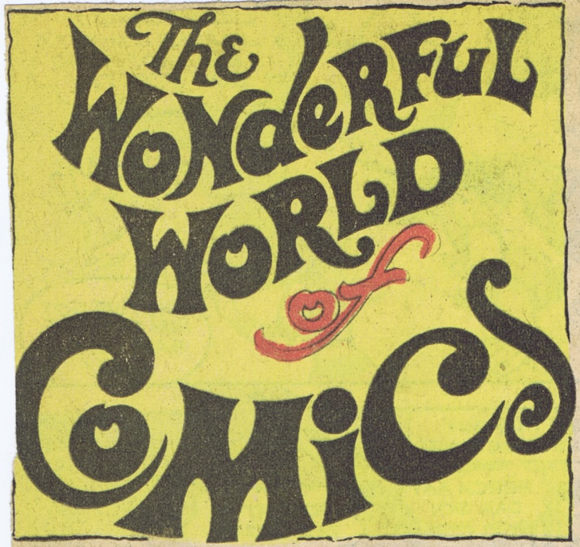
I don’t know for a fact who wrote any of these pages; only one in my possession is signed (“The Greatest Heroes of Them All, Part 5,” by “Marvin Wolfman”) but most were probably written by fan-turned-assistant editor Mark Hanerfeld.
I was a budding comics historian in 1968, eager to learn whatever I could about what came before. So eager, in fact, that I did the unthinkable: I cut up comic books to collect the DC fan pages.
I no longer recall which issues fell under the knife, or why I trimmed the pages to within a millimeter of their lives, but here are my 13 FAVORITE 1960s DC COMICS FAN PAGES, in no particular order:
—
National Periodical Publications “Dear DC Reader” Form Letter (1960s). While not a “fan page,” this mid-to-late 1960s form letter was a page any DC fan… sorry, NPP fan would have loved to have. In response to readers comments, Marvel responded with either a postcard (signed by “Fabulous” Flo Steinberg as Stan) or a fabled “No Prize,” an envelope that contained… no prize!
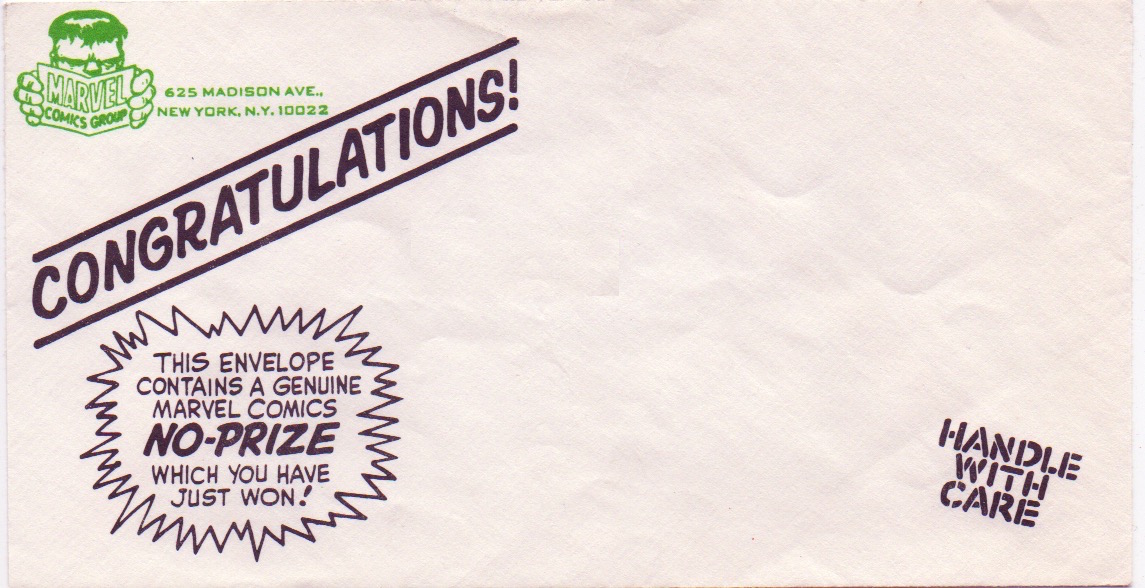
But DC responded with a frickin’ encyclopedia of DC! Everything you wanted to know about the company and its characters, all in tiny, tiny type on both sides of a single 8.5 x 11-inch tri-folded sheet of paper. Different kinds of kryptonite? Members of the Legion of Super-Heroes? How old is Superman? How do you submit stories or ideas? Who sells Superman Halloween costumes? (The Ben Cooper Company, of course!) What sort of letters of comment have the best chance of getting into print?
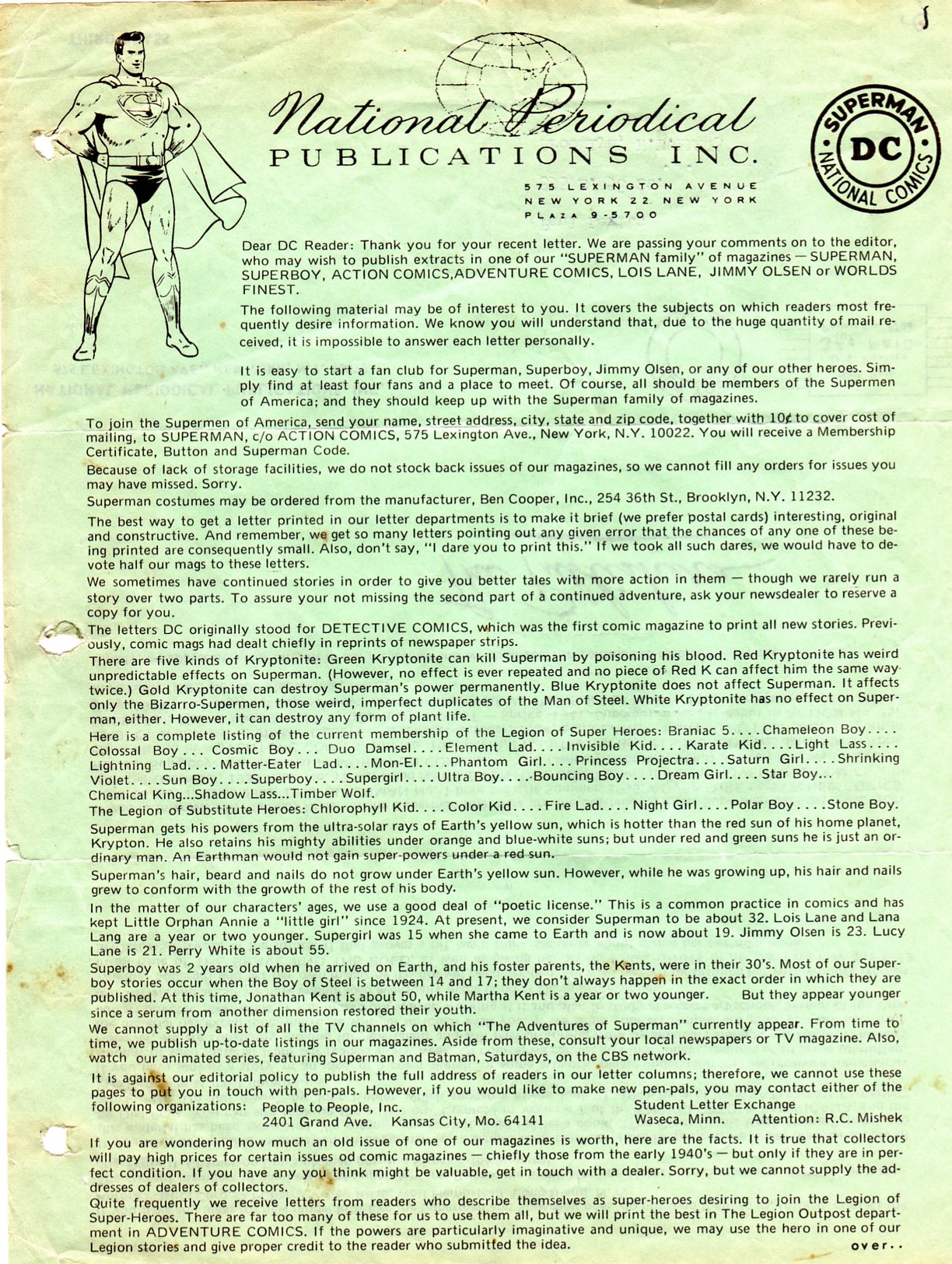
It was all in there!
I don’t recall what I got the form letter in response to, but it was like receiving a Rosetta Stone in the afternoon mail! (Yeah, there were still morning and afternoon mail deliveries, and we had our milk delivered by a milkman — delivered by truck, not horse-drawn wagon. I’m old but not that old.)
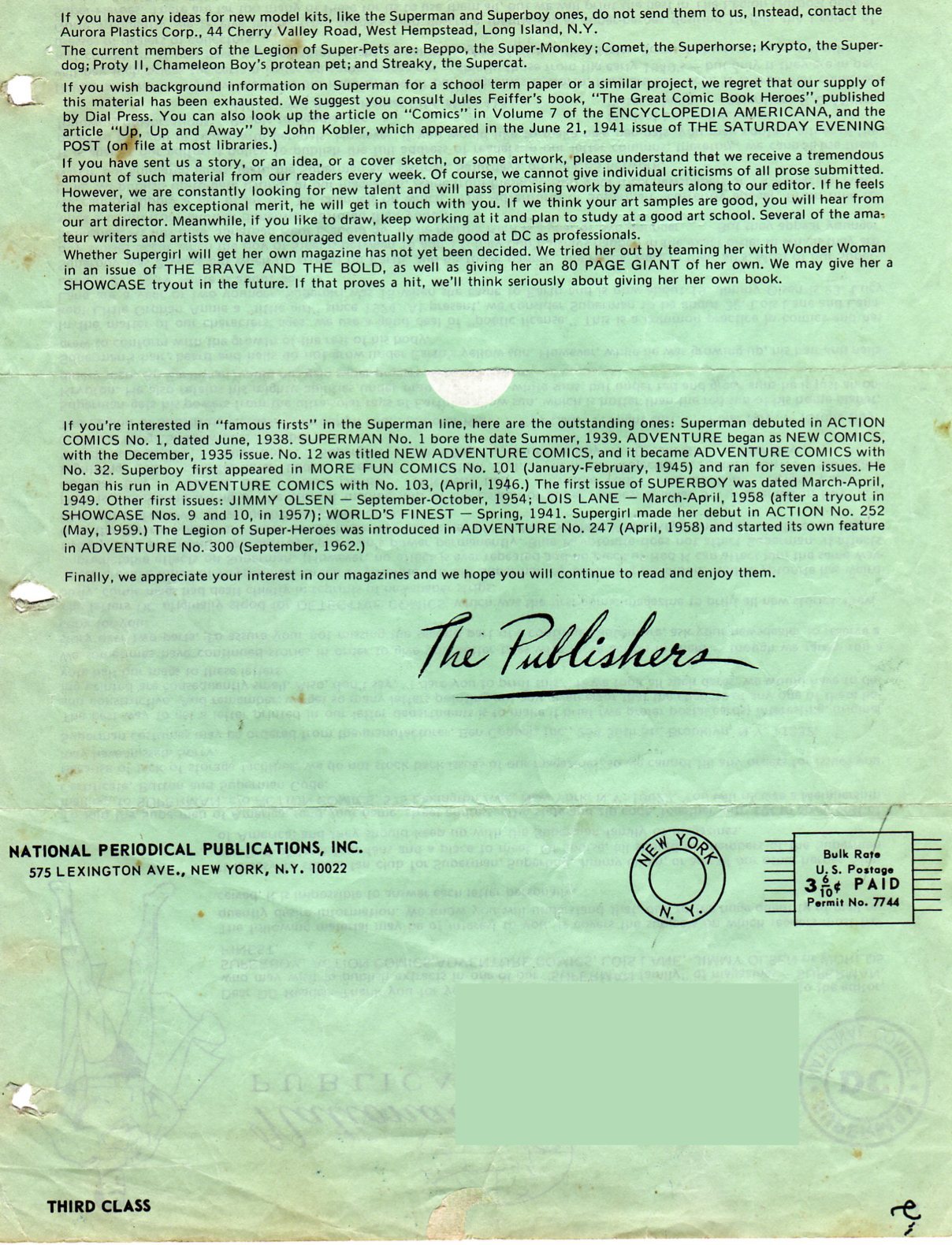
—
Fact File #1: Tarantula. Who? The Tarantula, aka “John Law, a writer of detective fiction,” was so obscure – he’d appeared in only 19 stories in a long-ago cancelled title — that it’s fascinating DC ran this mini bio. Someone may have also liked the idea that they could rub Marvel’s nose in the fact that DC had a “Spider-Man” of sorts 20 years before the competition.
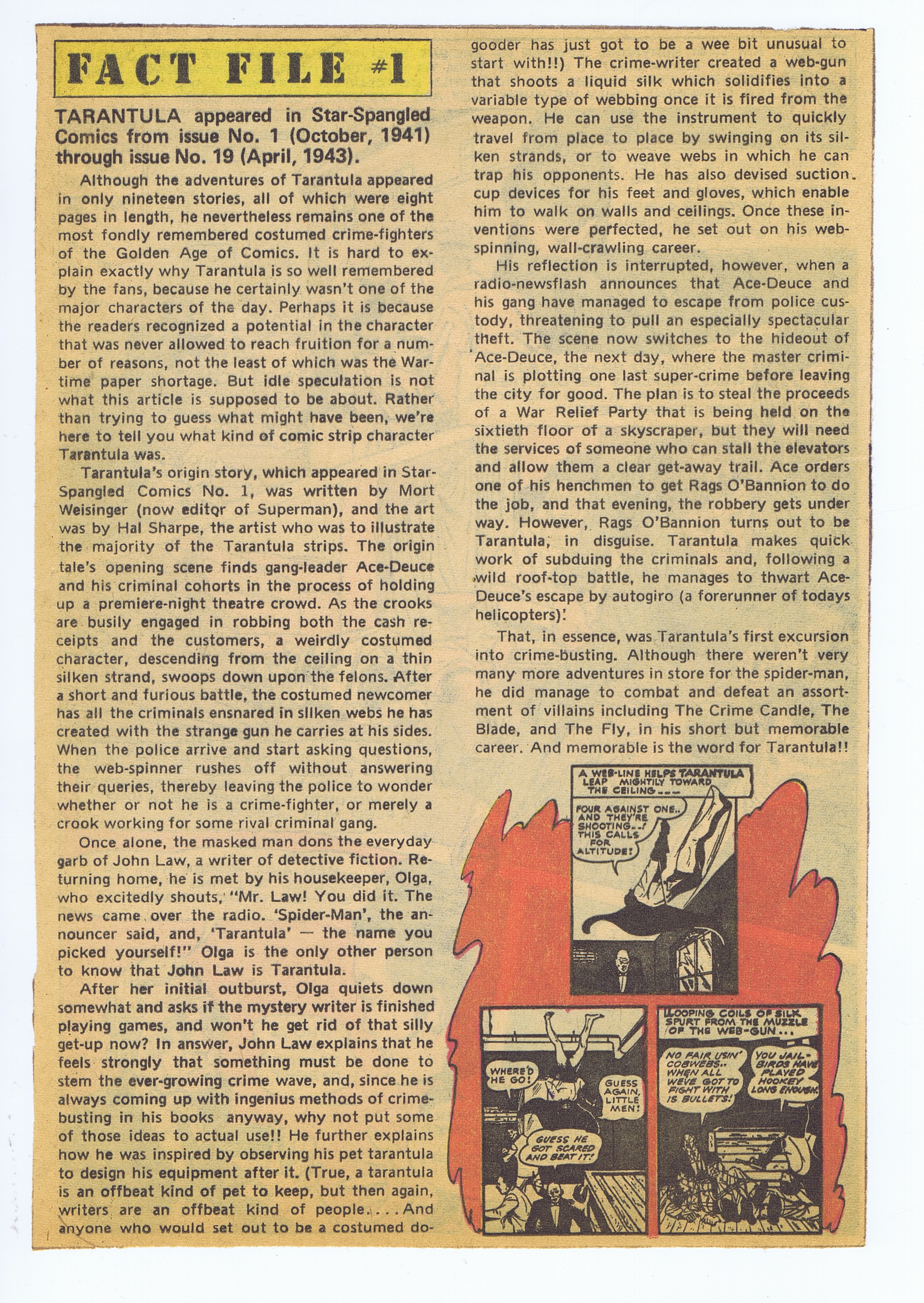
Two decades later, Tarantula was rescued from obscurity and I would dialogue “The Origin of Tarantula” for All-Star Squadron #66 (February 1987), Roy Thomas’ own latter day “fact file” of the DC heroes of the Golden Age. What goes around, comes around.
—
Fact File #2: Golden Age Green Lantern. The Alan Scott Green Lantern, on the other hand, was a somewhat familiar face by the late 1960s after his appearances in the annual Justice League of America/Justice Society of America crossovers and several guest-shots in the pages of his Silver Age counterpart’s title.
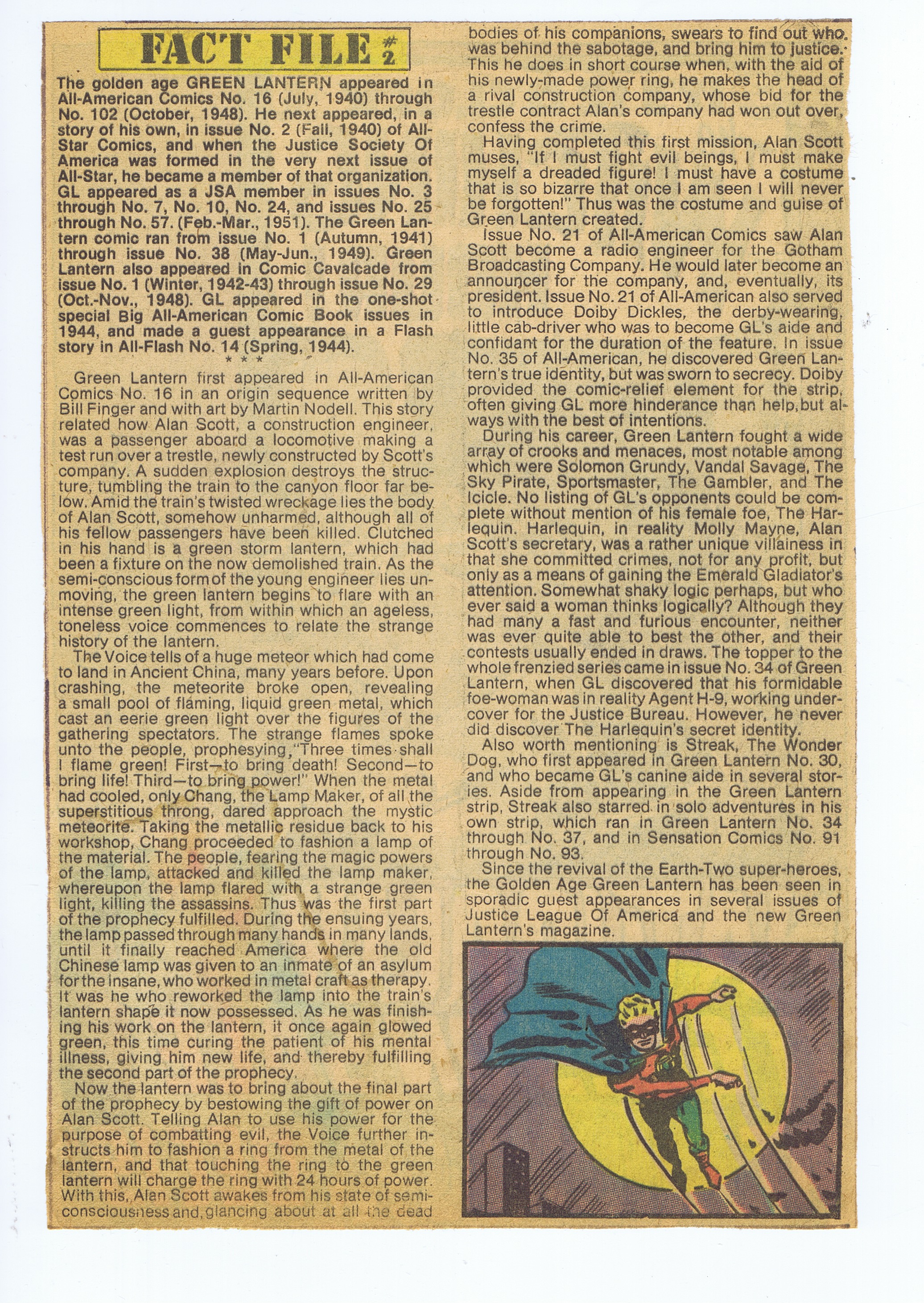
But other than the few pages of his origin reprinted in Jules Feiffer’s indispensable Golden Age primer The Great Comic Book Heroes, there weren’t many sources for information like this outside of fanzines, which I was only vaguely aware of, until…
—
The Wonderful World of Comics #6: What’s In a Fanzine? What indeed! I knew such creatures as fanzines existed, but I’d only gotten brief glimpses of those brought home by my older brother who, not being a sharer by nature, kept them locked away from me. Features like this showed me what I was missing and got me to start mailing off for copies of my own. And comics fandom of that era being the small world it was, 20 years later, Brooklyn-born me would be a regular patron of Fandom Calling’s Ohio-born Mike Raub’s Dream Factory Comics shop after we had both transplanted to Connecticut.
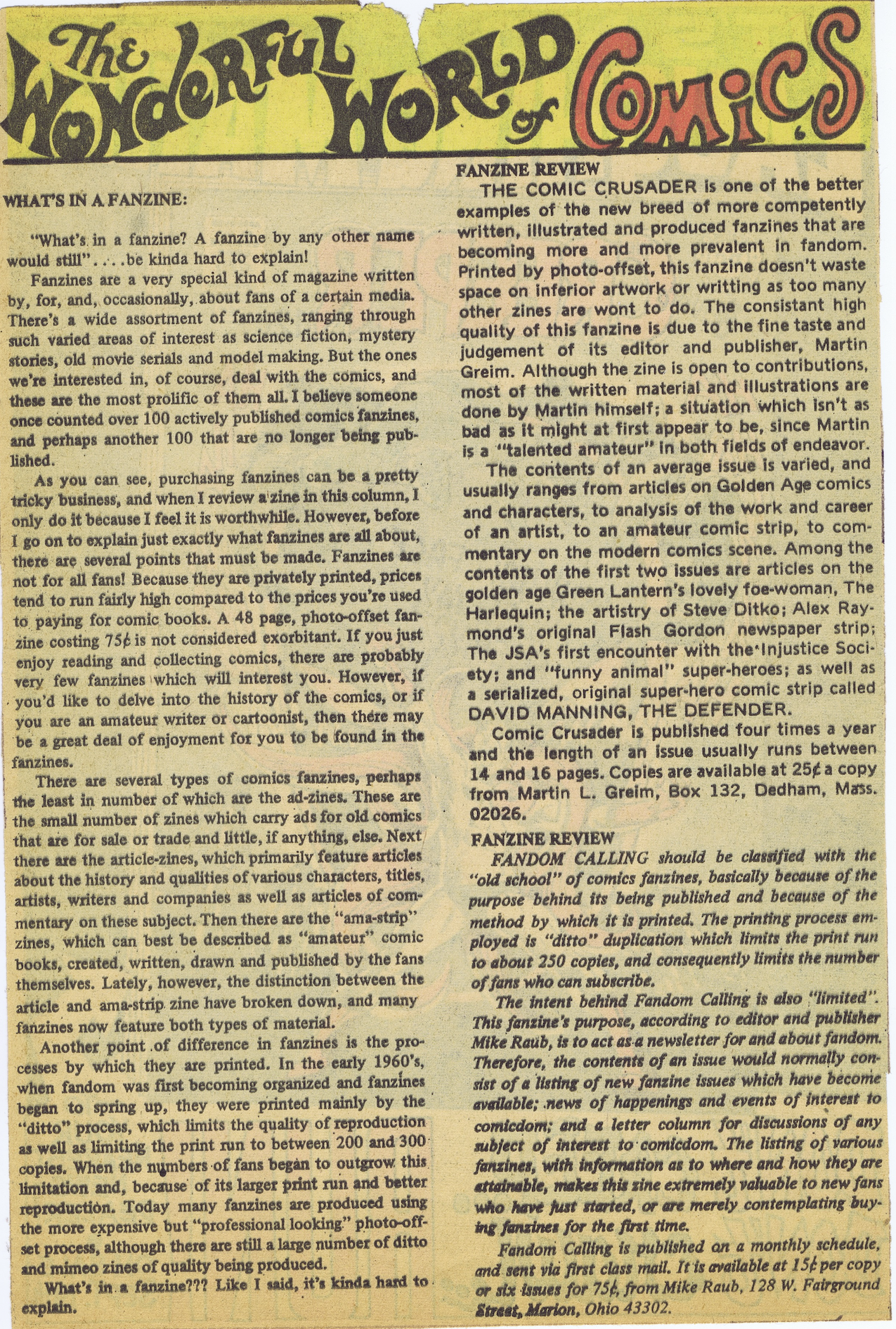
—
The Wonderful World of Comics #11: DC Stars of Stage, Screen, Radio and Television. And the revelations just kept on coming! I knew, of course, about the contemporary other-medium appearances of Superman, Aquaman, and Batman (with his own TV show and feature length movie in 1966, which was shown in many theaters with the 1943 serial) but this one was full of hitherto unknown facts. Superman and Batman had been on radio? I’d grown up watching reruns of Adventures of Superman starring the beloved George Reeves, the one, the only Superman… except (gasp!) for Kirk Alyn, who had played the part first… in movies (actually in serials)!? And Blackhawk and Vigilante, Congo Bill and Hop Harrigan too? Pass the popcorn, I had a lot of catching up to do!
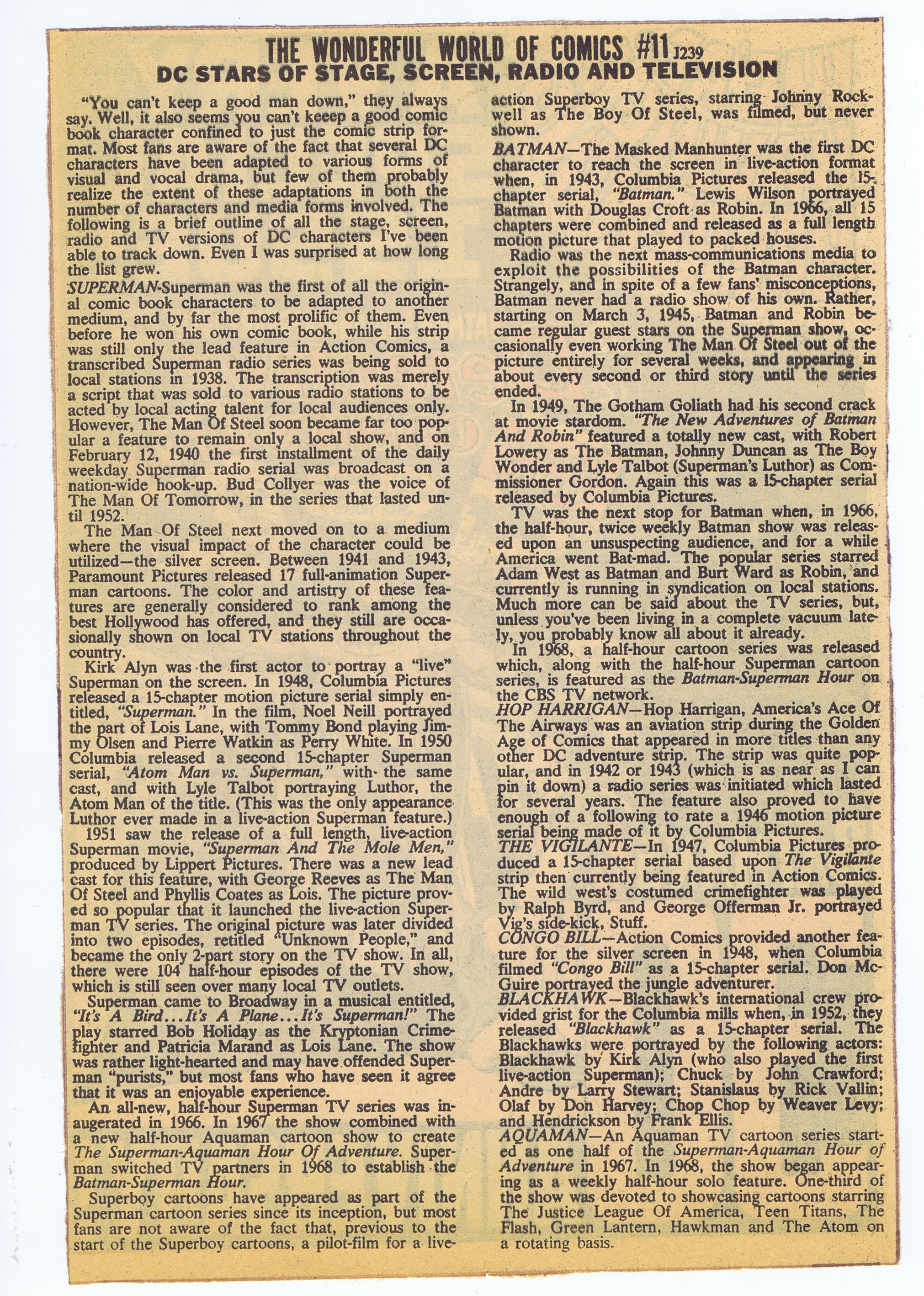
—
The Wonderful World of Comics: Whatever Happened to the Guy What Us’ta Draw the Flash, or, Carmine WHO??? The “Inquiring Fanatic” went in search of Carmine Infantino, the once and future Flash artist, and offered a tiny glimpse into the editorial structure of the company. The “I.D., National’s BIG BOSS” referenced would be executive vice president Irwin Donenfeld. The vaguely absurdist style of humor this was written in was very popular back then (see, any 1968 issue of The New Yorker). Both Irwin and that style are gone.
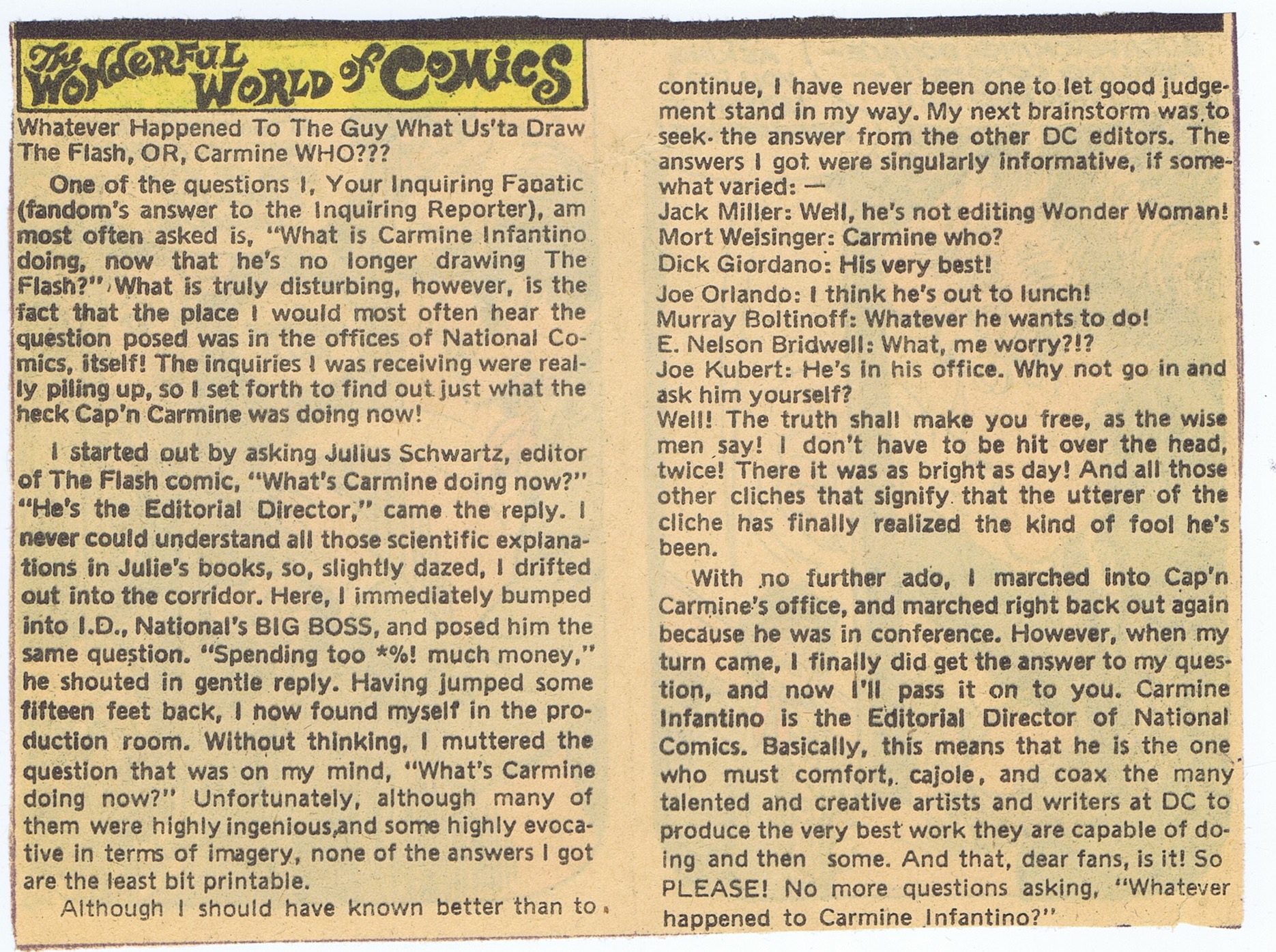
—
The Spectre Interviews Neal Adams (The Spectre #2, Jan./Feb. 1968). Just like with the NPP fan form letter, even though it’s technically an issue-specific text page, I’m going to stretch the boundaries a little to allow this one. Even back then I think I realized that this “interview” had to have been written by the interviewee — an artist whose work had a profound effect on the way I looked at comic books from the very first cover of his I ever saw (Action Comics #356, Nov. 1967). Years later, after meeting Neal a few times, I was positive.
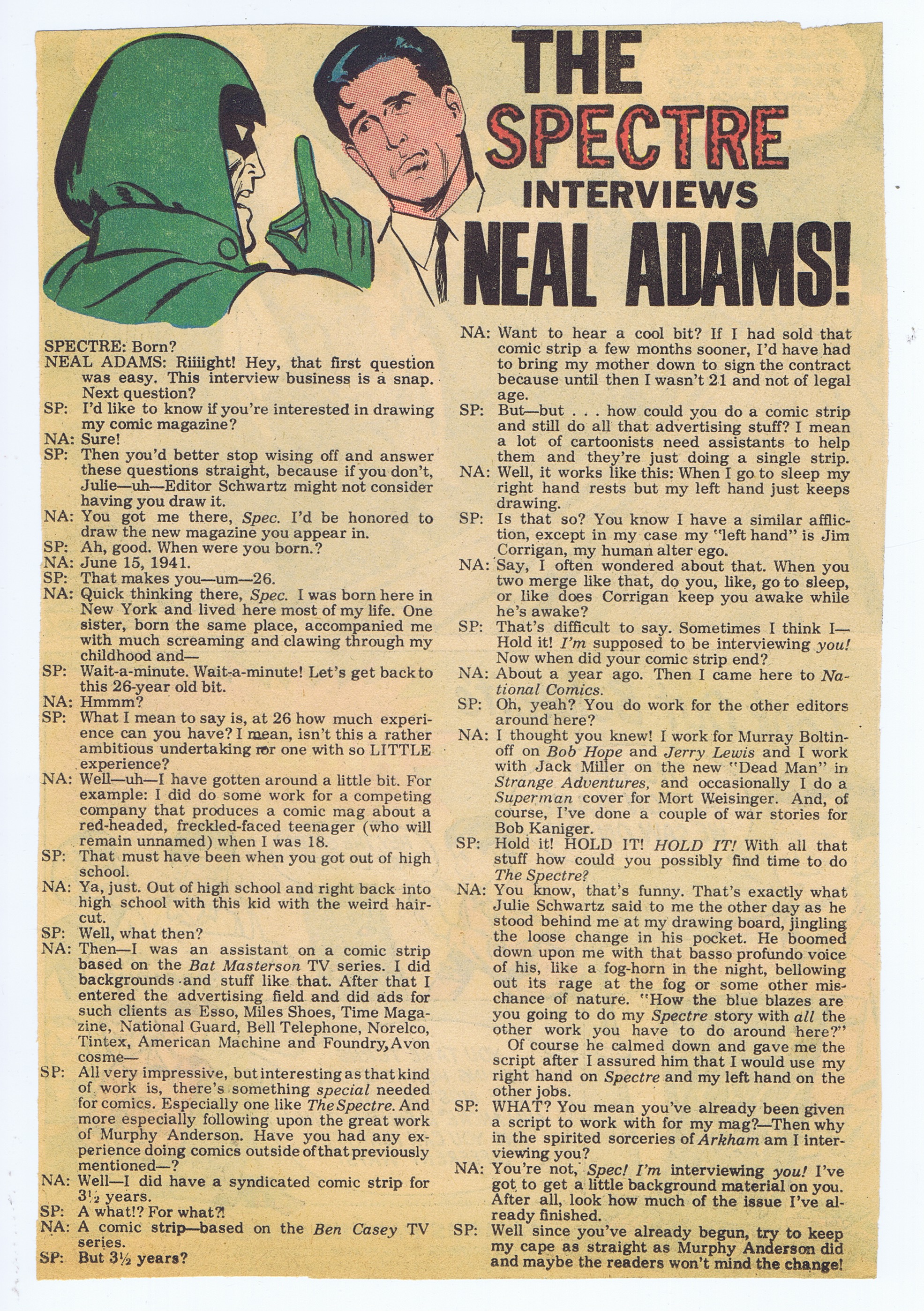
—
The Wonderful World of Comics #7: Who Ever Heard of Jay Scott Pike!?! Sometimes, these pages would turn out to be a delightful mélange of information: a little bit of creator profile (in this case the overlooked-by-superhero-fans romance artist Jay Scott Pike whose creation Dolphin was making her debut in Showcase); a soupçon of fandom news; plus a healthy serving of reader mail, answering questions ranging from characters’ histories to their publishing futures.
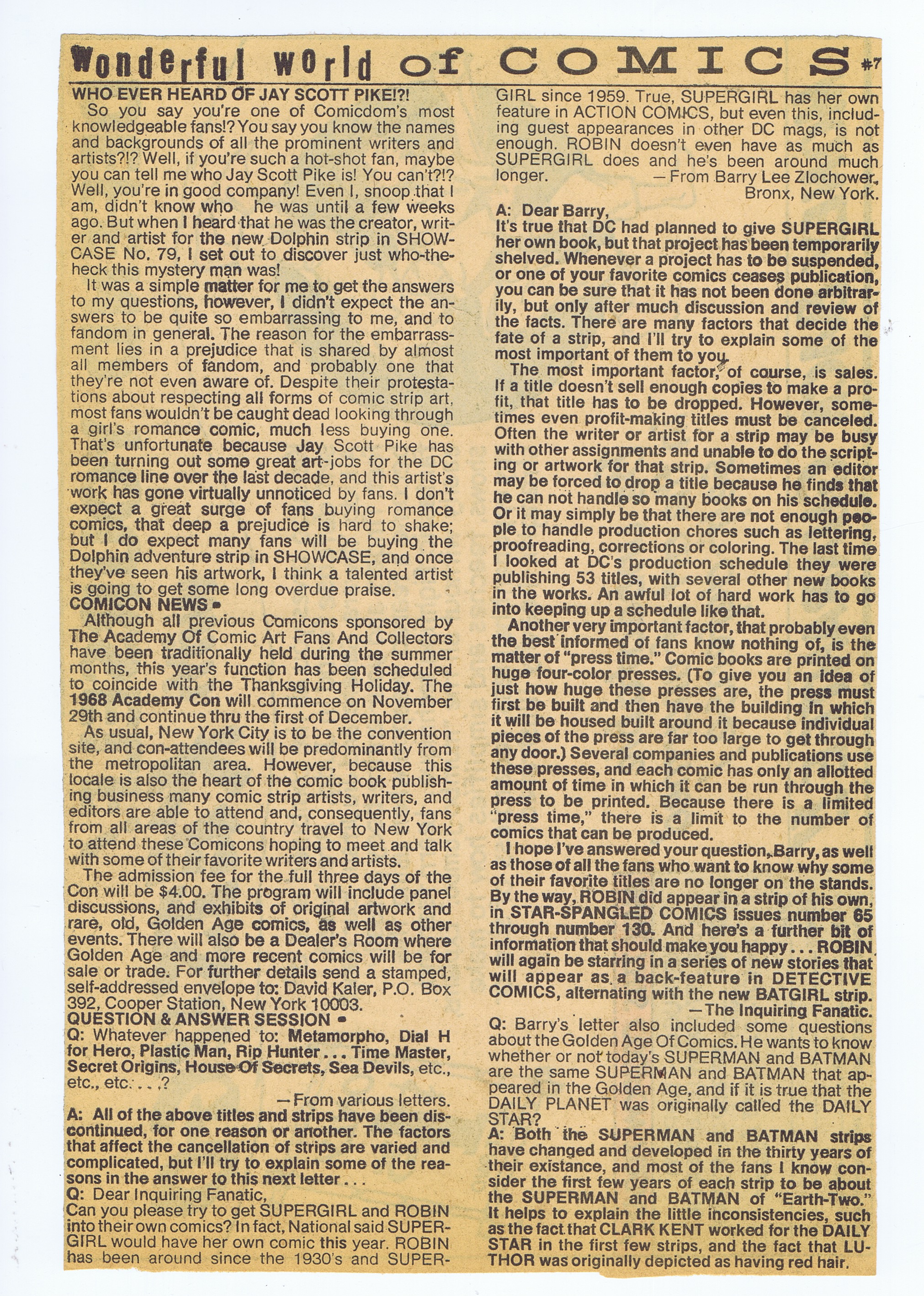
—
Fact File #7: Detective Comics #27 (May, 1939). The odds that most fans would even be in the same room as a copy of Detective Comics #27, much less have the chance to actually read it, were about the same as their chances of being eaten by a Kryptonian Thought-Beast. (Look it up!) There were lots of other features in that landmark issue in addition to “The Case of the Chemical Syndicate,” the six-page story that introduced Batman, including Slam Bradley (by Siegel and Shuster), Spy, Speed Saunders, Crimson Avenger, the Western strip Buck Marshall and others. Now we knew!
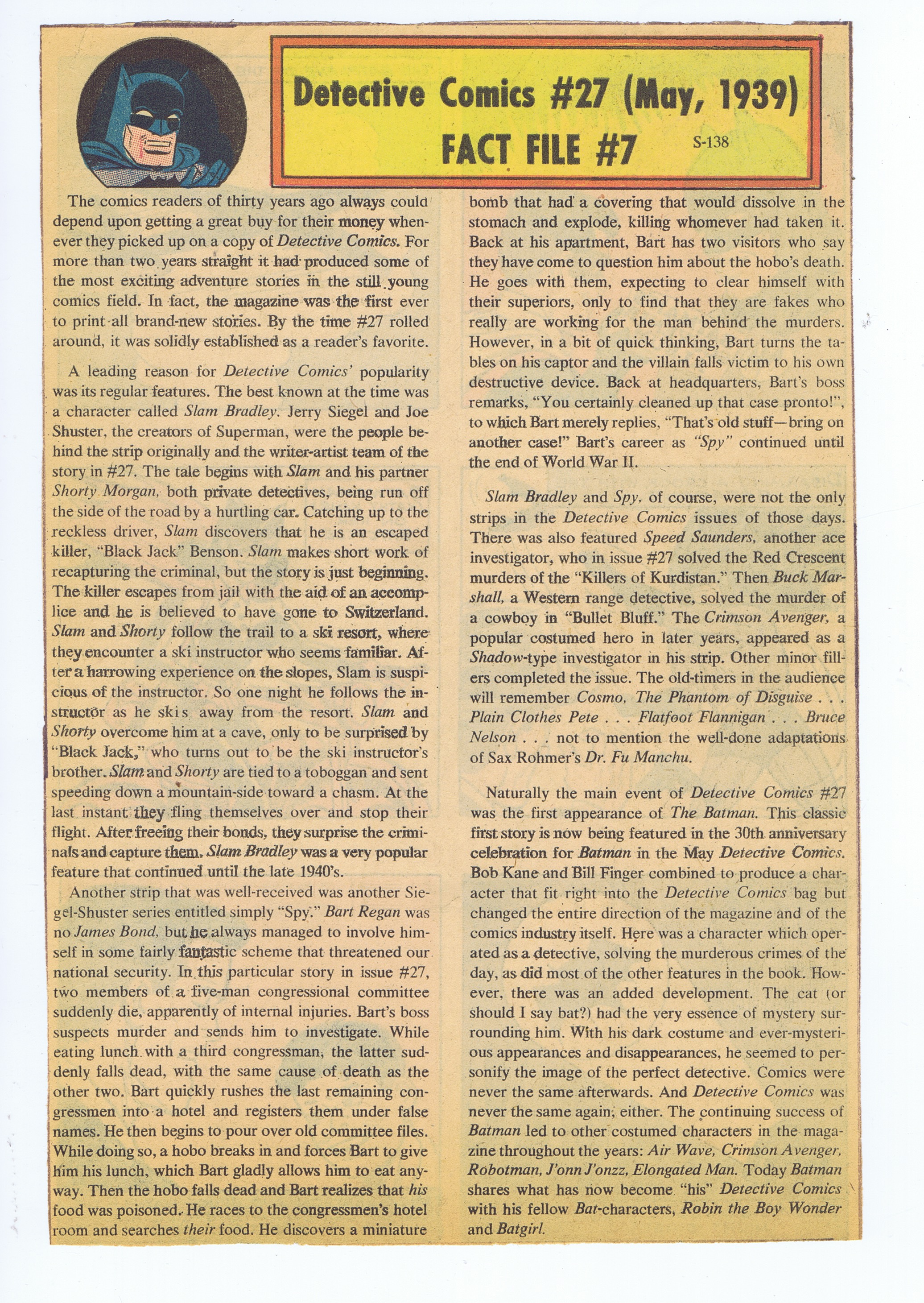
—
“The Greatest Heroes of Them All,” The Brave and the Bold #87-#91 (Dec. 1969/Jan. 1970-Aug./Sept. 1970). Another text page… or five text pages, all asking the most fannish question of them all: Who’s the greatest hero ever? Young, fan-turned-professional Marv Wolfman wrote these pages for editor Murray Boltinoff, a retrospective of the pantheon of heroes who had thus far passed through the pages of B&B.
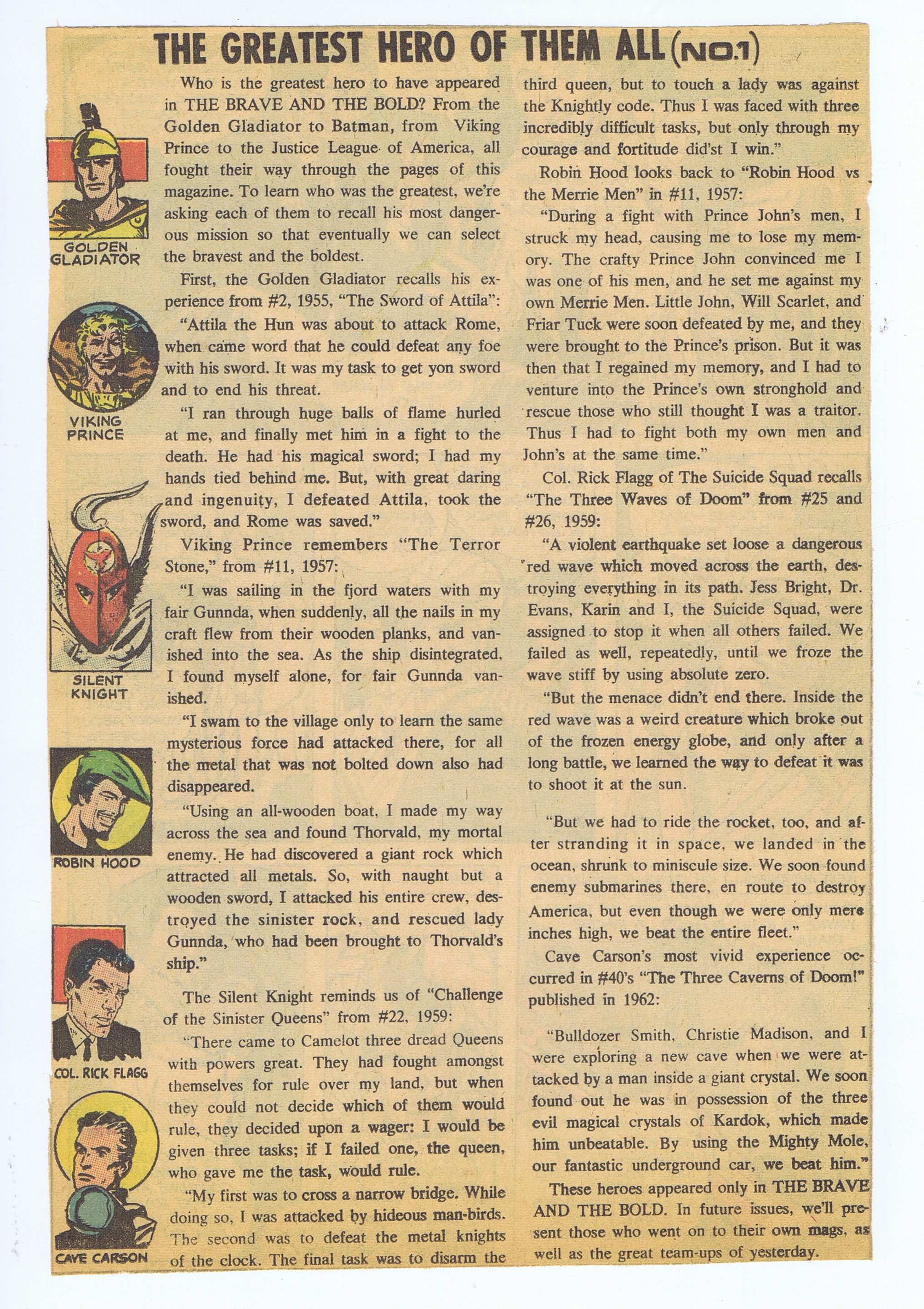
Part 1 covered the adventure heroes of the title’s first couple dozen issues (the Viking Prince, Silent Knight, Cave Carson, et al), Part 2 the superheroes who made their debuts in B&B (Hawkman, Metamorpho, Teen Titans, and, of course, the Justice League of America), then on to the non-Batman superhero team-ups, the early Batman team-ups, and, finally, more Batman team-ups. And who, at long last, claimed the title of the greatest hero? “You readers now have all the facts before you. If you wish to convey your thoughts, please write us.” Really, Marv?!
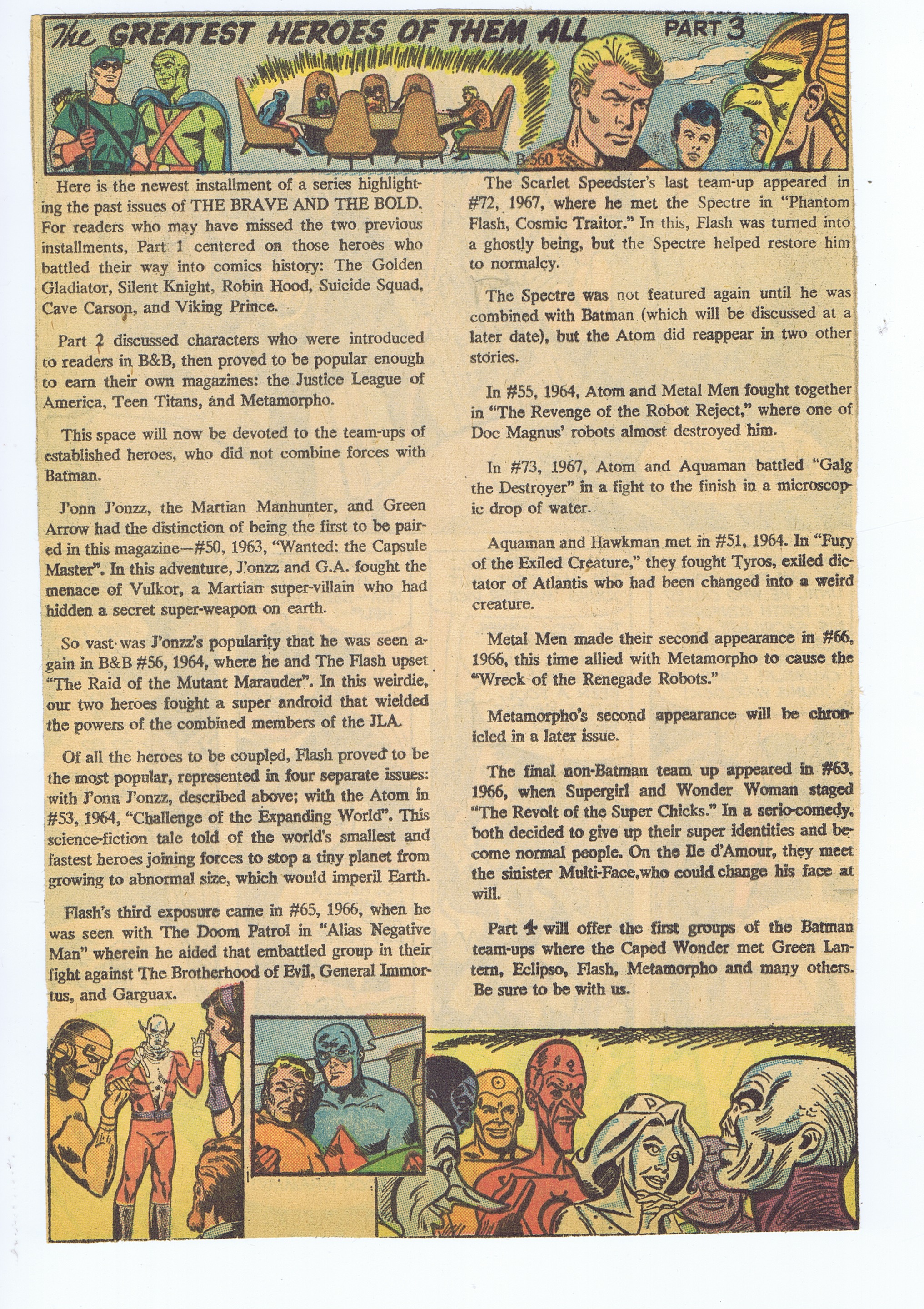
—
Fact File #6: Sargon the Sorcerer. I can’t say that I ever became a Sargon the Sorcerer fan, but this wasn’t just an overview of this Golden Age hero’s history and adventures. Instead, it followed the nine-year effort to find a home and direction for the struggling backup feature in several titles. Personally, I’d have lost the turban.
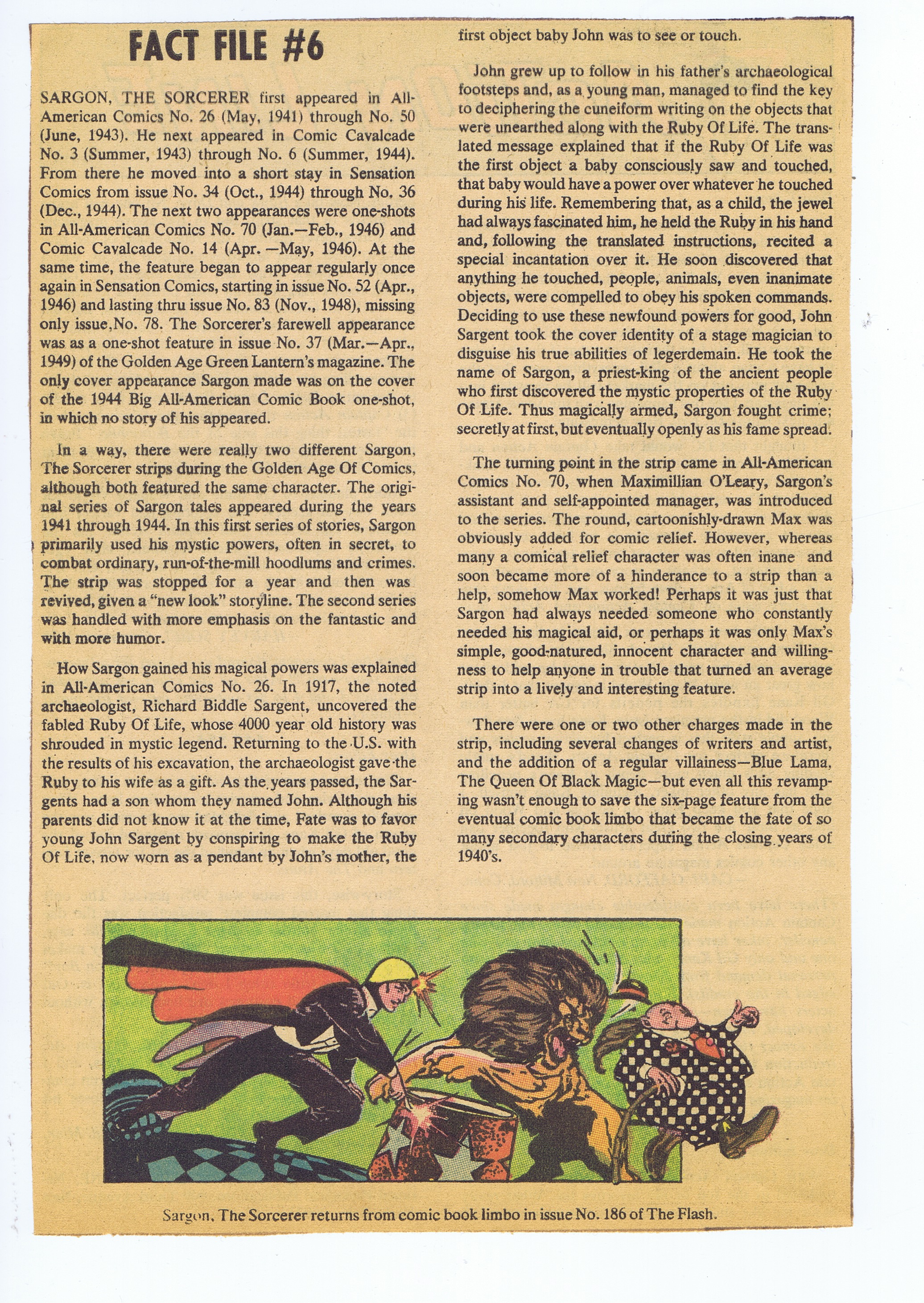
—
Fact File #9: The Seven Soldiers of Victory. Here was another revelatory Fact File. I’d never heard of half the members of the Seven Soldiers of Victory, much less the group itself. A few years later, they would be resurrected in the annual JLA/JSA crossover event, and in between, my friend Steve would start collecting the short, 14-issue run of Leading Comics in which they originally appeared.
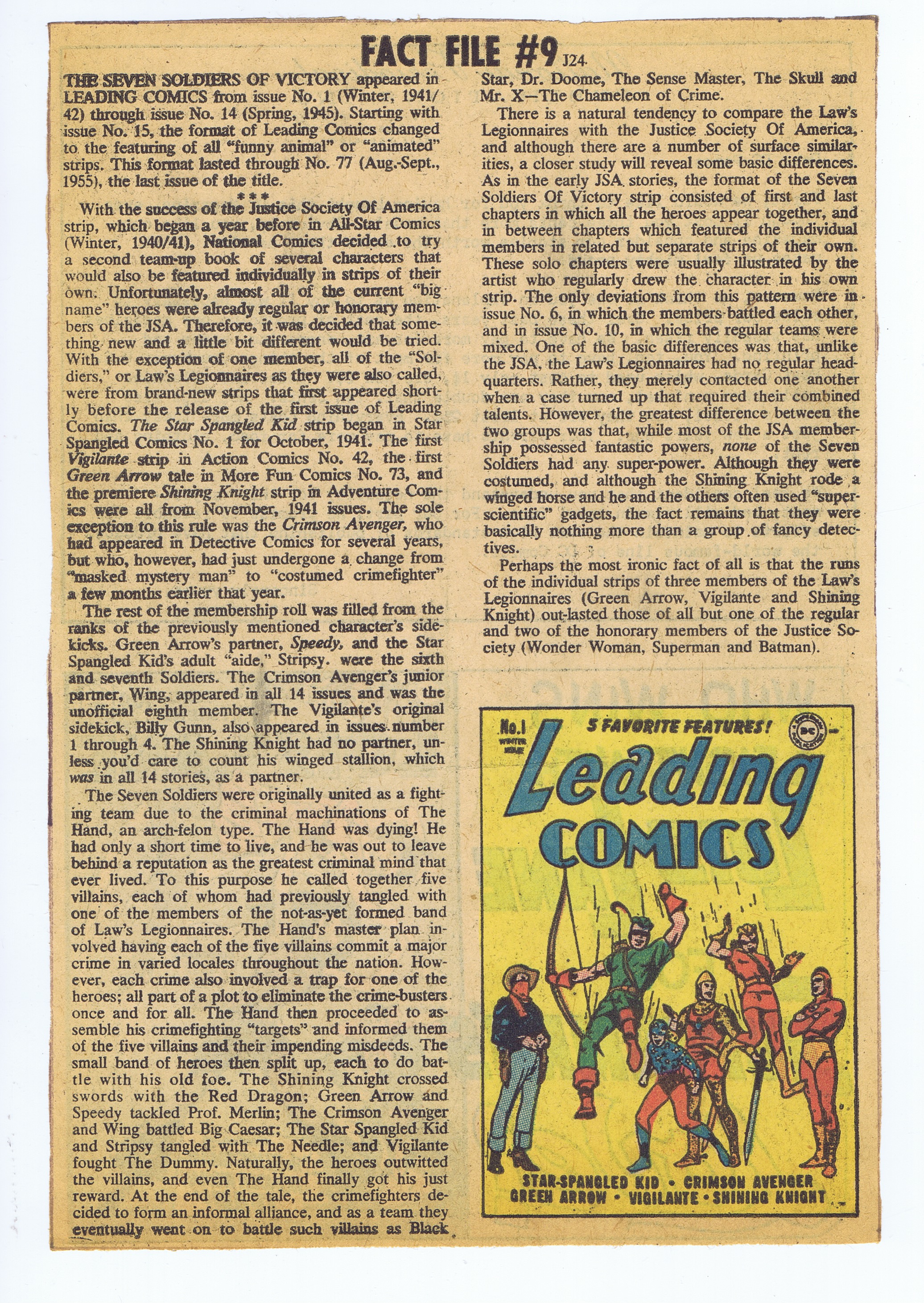
—
The Wonderful World of Comics: Fanzine Review. It was back to the wonderful world of fanzines with a serious plug for Texas reader Larry Herndon’s legendary ’zine, Star-Studded Comics… and graffiti? Rowan & Martin’s Laugh-In was all the rage on TV, its rapid fire, quick-cut humor popularizing these fortune cookie-style gags. My favorite part of the page is the breathless announcement of the upcoming Joe Simon project, The Geek, which the reporter (the Inquiring Fanatic again, no doubt) concluded didn’t sound like it was going to measure up to Simon’s earlier creations (with Jack Kirby) for DC, but assured readers the old master would probably pull something off. He didn’t.

—
MORE
— PAUL KUPPERBERG: My 13 Favorite 1960s DC COMICS HOUSE ADS. Click here.
— PAUL KUPPERBERG: My 13 Favorite 1960s Comic Book Books. Click here.
—
Paul Kupperberg has been writing comic books from Archie to Zatanna for 45 years at DC, Archie, Charlton, Marvel, Bongo and others. He is also the author of Paul Kupperberg’s Illustrated Guide to Writing Comics (Charlton Neo Press); I Never Write for the Money… But I Always Turn in the Manuscript for a Check (Comics Career); the comic book industry-based murder mystery The Same Old Story, the short-story collection In My Shorts: Hitler’s Bellhop and Other Stories, and JSA: Ragnarok, all from Crazy 8 Press and all available on Amazon, or signed and personalized direct from Paul (email him at pkupps55@yahoo.com for details).

March 6, 2021
Thanks for this fascinating compendium, all new to me. The Spectre/Neal Adams interview, in particular, was great fun. Why should an ageless being with amazing cosmic powers be modest? And I guess that goes for the Spectre as well….
December 13, 2022
Ah, the days when the Spectre might talk about his “mag”. I don’t think I miss them, but I very much appreciate this fascinating window into that time.
March 1, 2024
The Detective Comics #27 Fact File actually appeared in Detective Comics #387, May 1969, the 30th anniversary of Batman’s first appearance (note the reference to “The comics readers of thirty years ago” at the very beginning).
Detective Comics #387 allegedly reprinted the first Batman appearance from #27, but this was actually the first appearance of the infamous “censored” version of the story. It was relettered and redrawn for this appearance, and my guess is that they did so because the elements that were removed – a knife sticking out of the back of the murder victim, and a word balloon where the bad guy admits he did it but won’t let Batman send him to the electric chair – wouldn’t pass muster with the Comics Code, which wasn’t around in 1939.
March 2, 2024
Fun post. Thank you.
March 2, 2024
Oh, this was fun! I always liked Tarantula in the All-Star Squadron. Olga always reminded me of a dear lady I knew who had fled Germany in the 70s. I used to practice my German on her, I should have kept up!